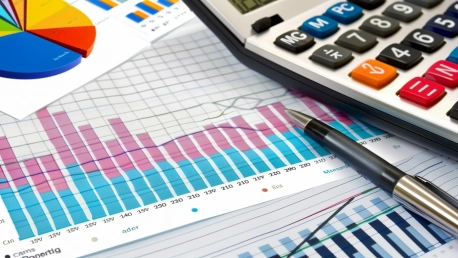The realm of financial planning and analysis is on the brink of a revolution. With an increasingly volatile global economy, the demand for robust financial forecasting has never been greater. As we stand in 2023, the global financial forecasting market is nascent with its $8.7 billion valuation. Yet, against this backdrop of burgeoning complexity, it is set to inflate to an astounding $21.1 billion by 2031. This remarkable growth trajectory, boasting a compound annual growth rate (CAGR) of 11.7% from 2024 to 2031, underscores the escalating reliance of multifaceted industries on state-of-the-art financial forecasting tools. These tools are not only pivotal for budgeting and financial performance evaluation but are also a linchpin in strategic decision-making processes across sectors.As sophisticated algorithms and intelligent software pierce through the veil of financial uncertainty, the industry’s growth is propelled by an omnipresent digital transformation. Companies are no longer just collecting data; they are harnessing it in unprecedented ways thanks to advancements in artificial intelligence, machine learning, and predictive analytics.
The Driving Forces behind the Market Boom
The substantial expansion of the financial forecasting market is no accident. It’s the outcome of a concerted push for predictive accuracy in financial decision-making across myriad sectors. As industries grapple with the continuous need to anticipate financial outcomes, the technology underpinning this function evolves ceaselessly. Artificial intelligence and machine learning technologies are uncovering patterns within historical financial data, providing businesses with a clearer forecast of future financial states.Advancements in predictive analytics have turned forecasting from a corporate afterthought into a critical boardroom tool. Organizations previously swamped with backward-looking financial reports are now armed with forward-looking forecasts that wield the power to transform strategic visions into concrete outcomes.Digital Transformation: The New Financial Oracle
The wave of digital transformation washing over industries has significantly untangled the once intricate process of financial data collection and integration. With robust ERP and CRM systems, in concert with advanced business intelligence tools, enterprises now bask in a wealth of integrated financial data. This broad spectrum of financial information ushers in a new age of strategic foresight where decisions are not just data-driven but data-distinguished.This digital leap promises a treasure trove of insights, equipping those in finance with a panoramic view of their organization’s financial trajectory. It is this newfound clarity and depth that are fueling more nuanced and insightful financial forecasts.Embracing Cloud Computing for Financial Acumen
In the landscape of financial forecasting, cloud computing has risen as an invaluable ally, offering resilience, agility, and cost efficiency. The migration from traditional IT infrastructure to the cloud underpins the democratization of financial forecasting tools. Now, even modest businesses can tap into analytical forecasting that was once the exclusive domain of conglomerates.This transition to cloud-based models is not merely a trend but a transformation that levels the playing field, ensuring that organizations, regardless of their scale, can capitalize on cutting-edge financial forecasting tools to navigate the complexities of the market.The Rise of Financial Forecasting Software
In the competitive market arena, software solutions have captivated the lion’s share, outperforming traditional service-based offerings. The allure lies in features like predictive modeling, sensitivity analysis, and interactive dashboards, designed to enthrall finance professionals and executives alike. This emerging preference is not without merit as these tools don’t just compute—they enable a strategic and operational metamorphosis through intuitive designs and instantaneous data processing.As the sophistication of financial forecasting software skyrockets, its usability remains paramount—a testament to the thoughtful engineering that bridges the gap between complex analytics and user-friendly interfaces.North America Leading the Charge
The ascension of the global financial forecasting market finds its epicenter in North America. The region’s cutting-edge technological infrastructure, coupled with its mature financial services industry, has set the stage for the widespread embrace of forecasting solutions. The pervasive high-speed data connectivity and the embracement of innovation position North America at the helm, pioneering and proliferating the advancements that propel the financial forecasting field forward.Market Competition: A Hotbed of Innovation
Among the catalysts of growth in the financial forecasting market is a highly competitive landscape dotted with innovation. Industry behemoths such as Centage, Sageworks, Anaplan, Inc., and Oracle are relentless in their pursuit of perfection, resulting in a relentless stream of product enhancements and breakthroughs. These market mavens are the custodians of progress, ensuring that the market’s expansion is paralleled by the continuous evolution and refinement of forecasting tools.The COVID-19 Aftermath and Emerging Market Dynamics
The surge of digital innovation across various sectors has simplified the previously complicated task of gathering and assimilating financial data. Thanks to powerful ERP and CRM systems, paired with cutting-edge business intelligence software, companies are now reveling in an abundance of unified financial data. This vast array of financial insights heralds a new era of strategic vision, where decisions are distinguished by their data-driven nature.In this digitally advanced era, those in the financial realm are finding themselves with a treasure trove of information, endowing them with a comprehensive understanding of their organization’s financial path. Such perspicacity and granularity are driving more sophisticated and perceptive financial predictions.This technological stride is more than a mere modernization—it’s a strategic evolution. It’s giving financial professionals the superpower of foresight, backed by data, to navigate the complexities of business with newfound precision. In a world where the financial landscape is continuously shifting, this digital ascendance is a beacon of certainty, illuminating the road ahead with the brilliance of data-led insights.